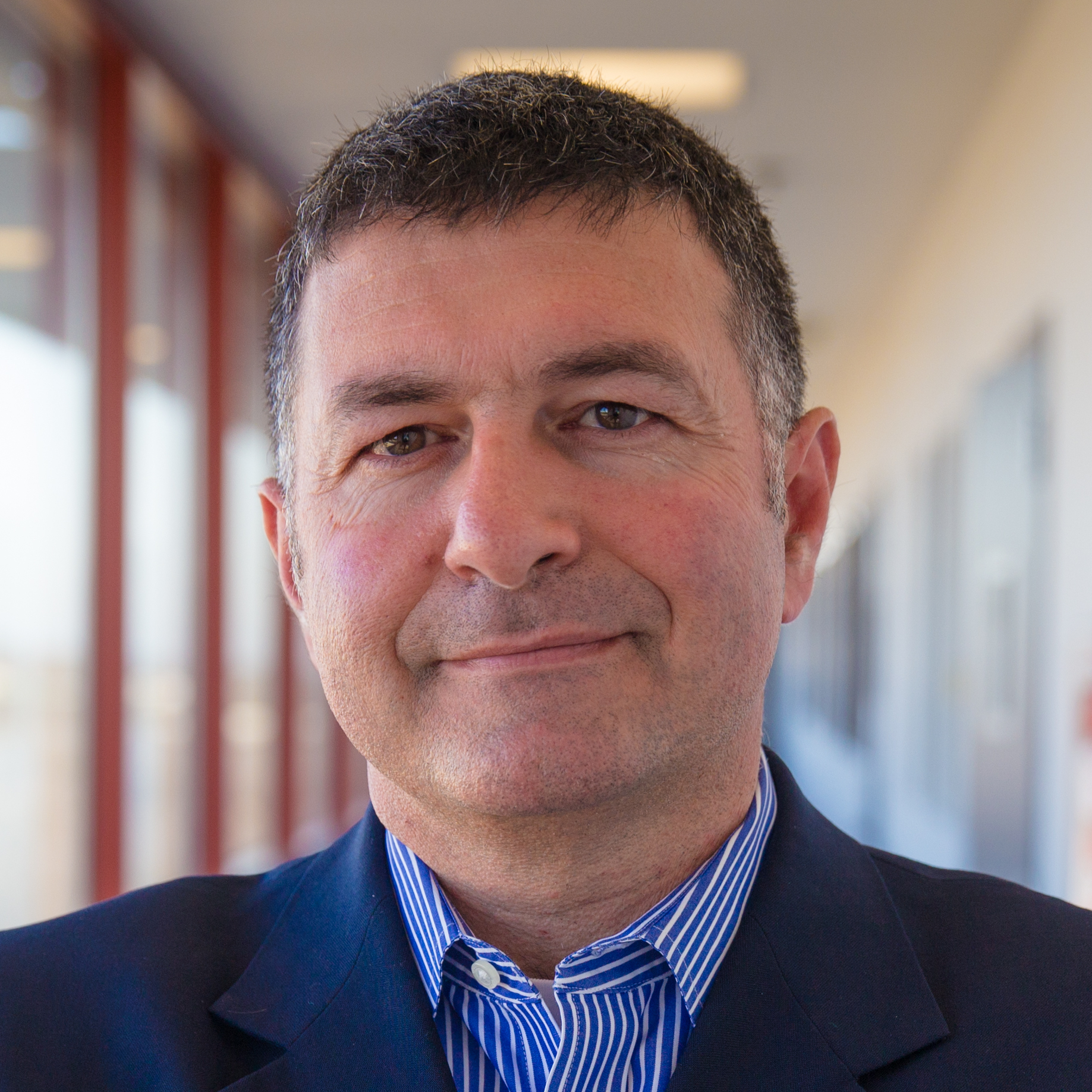Objectives
While sub-Terahertz frequency allows high bandwidth for potential high data rate communications, it suffers from the severe space loss. Meanwhile, low cost complementary metal–oxide–semiconductor (CMOS) transmit power from power amplifiers at this frequency is hard to meet the requirement to maintain the link margin of the wireless communications. So, large-scale phased-arrays with low calibration overhead are required at sub-THz (140 GHz, 220 GHz) to increase the antenna gain and maintain link margin over a wide angle.
Approach
The traditional radio frequency (RF) beamforming and local oscillator (LO) beamforming architectures of the phased-array suffer from the severe loss and high power consumption at sub-THz frequency. We rely on the intermediate frequency (IF) beamforming architecture, which requires lower cost while keeping the chip area small and compact. At the same time, we investigate the possibility of characterizing and calibrating the antenna arrays using (in-coming/out-going) radiation from antenna elements in neighboring arrays.
We collaborate with the Rodwell team at UCSB to define an ideal RF front-end design.
Accomplishments
In the first phase of the research program, we have built and measured transformer coupled LNAs at 140 GHz to test the RF front-end performance on both GF 45nm SOI process and 22FDSOI. We have designed 140 GHz direct conversion and IF receivers at both technology nodes. We have also taped out an 8-element wafer-scale phased-array receiver with IF beamforming for further test of the array performance in GF45RFSOI. In addition, we have designed wafer scaled antennas for both nodes.
We are also developing algorithms to characterize and calibrate the antenna arrays using (in-coming/out-going) radiation from antenna elements in neighboring arrays.
Team Leader
Gabriel M. Rebeiz (S’86–M’88–SM’93–F’97) received the Ph.D. degree from the California Institute of Technology, Pasadena, CA, USA. From 1988 to 2004, he was with the University of Michigan, Ann Arbor, MI, USA. His group has optimized the dielectric-lens antenna, which is the most widely used antenna at millimeter wave and terahertz frequencies. His group also developed 6–18, 30–35, 40–50, 77–86, and 90–110 GHz 8- and 16-element phased arrays on a single silicon chip, the first silicon phased-array chip with built-in-selftest capabilities, the first wafer-scale phased arrays with on-chip antennas, and the first SiGe millimeter-wave silicon passive imager chip at 85–105 GHz. His group also demonstrated high-performance RF MEMS tunable filters at 0.7–6 GHz, RF MEMS phase shifters at 1–100 GHz, and high-power highreliability RF MEMS metal-contact switches. As a Consultant, he helped develop 24- and 77-GHz single-chip SiGe automotive radars, phased arrays operating at X to W band for defense and commercial applications (SATCOM, automotive, and point-to-point), digital beamforming systems, and several industrial RF MEMS switches. He has graduated 64 Ph.D. students and 22 post-doctoral fellows. He is currently a Distinguished Professor and the Wireless Communications Industry Endowed Chair Professor of Electrical and Computer Engineering with the University of California at San Diego (UCSD), La Jolla, CA, USA. He also leads a group of 20 Ph.D. students and post-doctoral fellows in the areas of millimeter-wave (mm-wave) radio frequency integrated circuits (RFICs), tunable microwaves circuits, RF MEMS, planar mm-wave antennas, and terahertz systems. He has authored or co-authored more than 670 IEEE publications and authored RF MEMS: Theory, Design and Technology (Wiley, 2003). Dr. Rebeiz is a member of the National Academy. He was a recipient of the URSI Koga Gold Medal; the 1997–1998 Eta Kappa Nu Professor of the Year Award; the 1998 College of Engineering Teaching Award; the 1998 Amoco Teaching Award given to the best undergraduate teacher at the University of Michigan; the IEEE MTT-S 2000 and 2014 Microwave Prize; the 2003 IEEE MTT-S Distinguished Young Engineer; the 2008 Teacher of the Year Award of the Jacobs School of Engineering, UCSD; the IEEE MTT-S 2010 Distinguished Educator Award; the IEEE AP-S 2011 John D. Kraus Antenna Award; the 2012 Intel Semiconductor Technology Council Outstanding Researcher in Microsystems; the R&D 100 2014 Award for his work on phased-array automotive radars; the 2014 IEEE Daniel E. Noble Field Medal for his work on RF MEMS; and the IEEE Antennas and Propagation Society (AP-S) 2015 Harold A. Wheeler Applications Prize Paper Award. He has been a Distinguished Lecturer of the IEEE MTT-S, the IEEE AP-S, and the IEEE Solid-State Circuits Society. He was a National Science Foundation Presidential Young Investigator. His students have received a total of 22 Best Paper Awards from the IEEE MTT-S, RFIC, and AP-S conferences. He has been an Associate Editor of the IEEE Transactions on Microwave Theory and Techniques.
Publications
C. Wang & G.M. Rebeiz, “A 2-Channel 136-156 GHz Dual Down-Conversion I/Q Receiver with 30 dB Gain and 9.5 dB NF Using CMOS 22nm FDSOI,” presented at the 2021 IEEE Radio Frequency Integrated Circuits Symposium (RFIC), Atlanta, GA, June 7-9, 2021.
S. Li & G. M. Rebeiz, “A 134-149 GHz IF Beamforming Phased-Array Receiver with 6.4-7.5 dB NF Using CMOS 45nm RFSOI,” presented at the 2020 IEEE Radio Frequency Integrated Circuits Symposium (RFIC), Los Angeles, CA, August 4-6, 2020.
